Since the dawn of time, humans have used tools to make jobs and tasks more efficient. It all started with a couple of makeshift hammers and spears.
Fast forward a couple of hundred thousand years, and the tools at our disposal have become slightly more sophisticated.
Today, we can use machines to process vast quantities of information, completely automate tasks, and take selfies from the top of Everest.
It should be no surprise then that one of the most effective ways to improve your customer acquisition efforts, currently the biggest challenge faced by marketing and sales teams, is by implementing the right tools.
Cue HubSpot, the creators of the inbound methodology and the world's leading marketing automation operating system. That’s because, unlike other cobbled-together systems, HubSpot’s CRM was developed as a unified system to help sales, marketing and service teams.
As CTO and founder Dharmesh Shah explained at Inbound 2021; “ Frankensystems – CRM monstrosities that are a bolted-together, cobbled mess – causes us to spend too much time taming the monster instead of taking care of customers. Most systems result from multiple disjointed designs, business goals, mergers, and acquisitions with no consistency, cohesion, or control. As business leaders, we need to leverage cohesive systems that serve the customer as much as they serve our teams. A CRM that’s the heart of an organization is customisable, connected, and customer-centric.”
So, if you’re looking to see how you can better use your HubSpot system to put the client first and boost customer acquisition, read one as we take a closer look at 10 of their most effective tools for boosting customer acquisition efforts.
TL;DR:
- Increase your website conversion with exit intent forms
- Use progressive profiling to get to know your visitors better
- Improve website speed with CDN
- Automated lead scoring helps prioritise leads
- Close your reporting loop to get more accurate CAC and ROI info
- Use smart rules to A/B test your lead nurturing email subject lines
- Increase sales team productivity with custom playbooks
- Automate sales task creation based on lead activity
- Use snippets to speed up sales activity
- Use smart CTA’s to move leads through their buyer’s journey
1. Increase Your Website Conversion With Exit Intent Forms
Marketing and sales teams are obsessed with conversion rates.
That’s because great conversion rates mean you reach your goals with less effort. You need fewer visitors to your website, fewer leads in your sales pipeline, and fewer sales staff to convert those leads into customers.
Exit intent pop-up forms are a great way to convert website visitors into leads by offering them one final chance to convert.
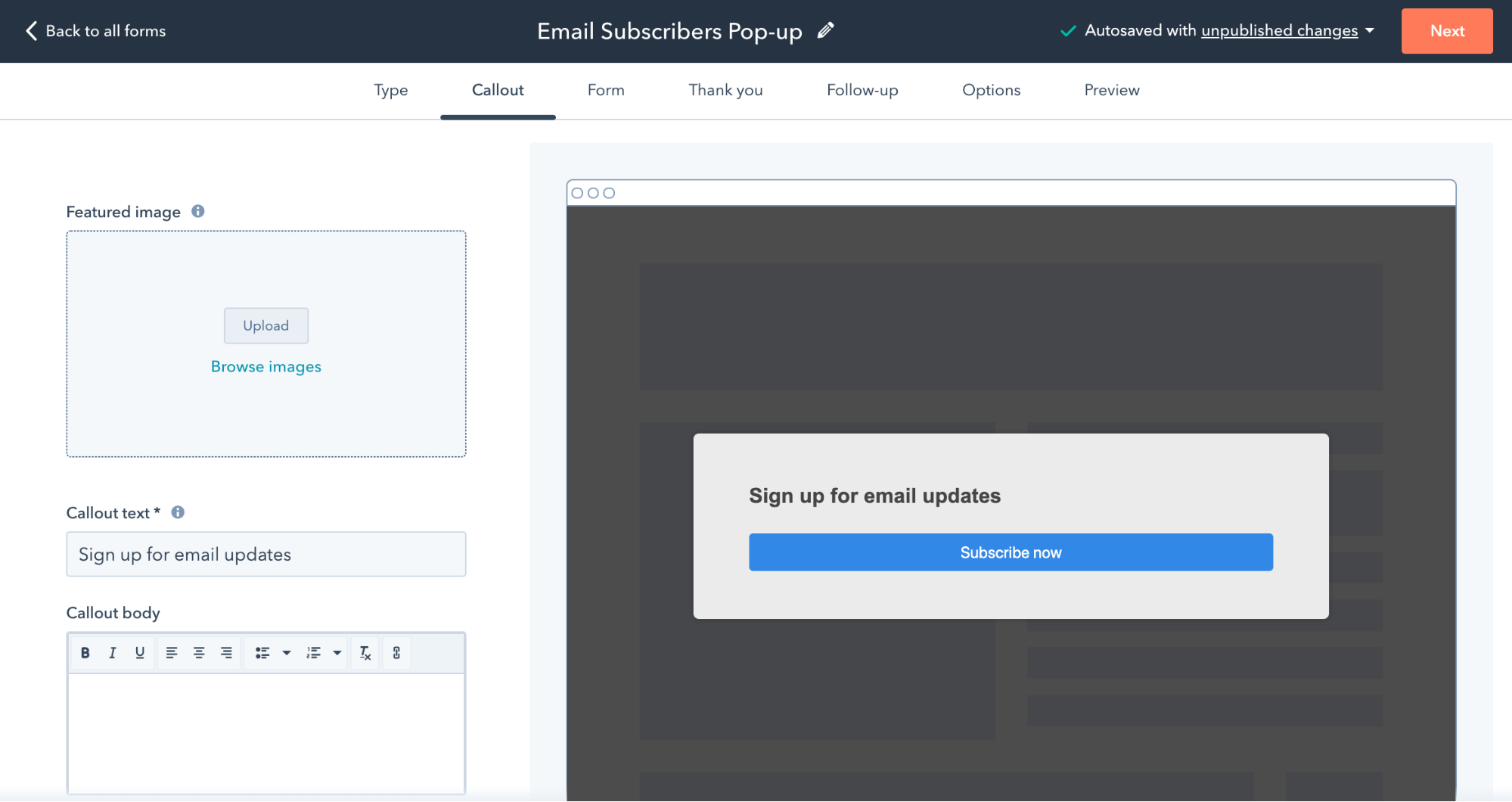
In a recent study, it was found that the average pop-up conversion rate is 11.09%. That’s 11.099% more leads for your marketing and sales team to nurture into customers.
In HubSpot, exit intent pop-up forms are a free feature as part of the HubSpot CRM, among several other form types.
READ: The Complete Guide to Customer Acquisition
2. Use Progressive Profiling To Get To Know Your Visitors Better
Continuing with HubSpot forms, one of the ways they can be used effectively to improve your customer acquisition is by using progressive profiling.
Progressive profiling uses dynamic form fields to ask for and collect information on prospects based on the information you already have about them.
If a prospect has already submitted their name and email address, then there is no point in asking them to submit the same information again.
Instead, you could use the opportunity to get deeper insights by asking industry/job-specific questions to understand their needs better and qualify your leads.
Let’s look at a quick example.
In your first form you would gather general information:
- Name
- Email Address
- Job Title
- Industry
The next time this person comes back to your website, instead of asking the same questions again, you change it to gather deeper insights and qualify them. Your questions might look at:
- What’s your biggest marketing challenge?
- What is your marketing budget?
- How quickly do you need to solve this challenge?

3. Create Automated Email Workflows To Nurture Leads
Email automation specifically refers to setting up emails that can be triggered based on certain behaviour events on your website. This is used as a way to create and nurture relationships with leads and potential customers for your business.
These are meant to help alleviate the time it takes to send one-to-one emails to the entire database (imagine 😳), but the trick is to make sure that even when sending an email to 1000 people, it still reads like you’re sending a highly personalised email.
The possibilities are endless. You can create abandoned cart workflows, new lead welcome emails, content campaign workflows, lead nurturing sequences, and even internal sales rep workflows to notify your sales team when a lead has taken a high-intent behaviour.
Image source: HubSpot
From there, it gets better, you can then start to use smart content and internal lead data to create email copy that’s highly personalised and tailored to each individual.
When 59% of respondents say that marketing emails have influenced their purchases according to a survey run by Salescycle, and the same research goes on to suggest that 50% of people buy from marketing emails at least once per month, it's not hard to see why this is a feature that can go a long way to boosting acquisition for your business.
4. Prioritise Leads With Automated Lead Scoring
It is always great to generate leads, but what happens to those leads once they are in your CRM?
On a small scale, your sales team can filter through them manually, but when your marketing efforts start to pay off, and your leads increase, that isn’t a scalable solution.
The challenge then becomes, how do you separate good quality leads from visitors who are just starting to look around?
Lead scoring is a way to prioritise leads by attaching values to their professional information and the behaviour they’ve taken across your website.
HubSpot collects data from your website visitors, everything from the first page viewed to the most recent deal closed and everything in between.
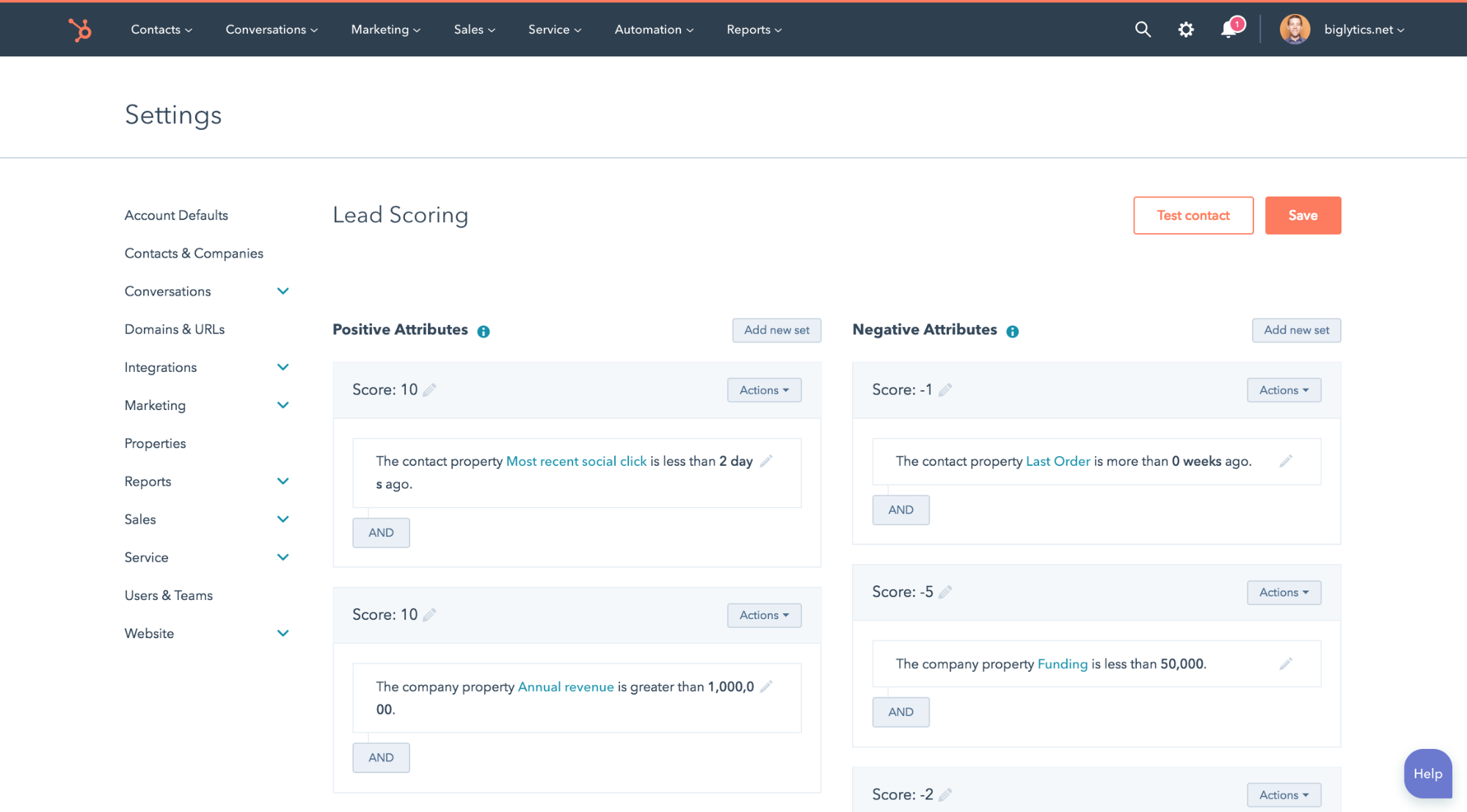
It then uses AI to attach values to the information it has collected and generates a lead score for each of your contacts in your CRM.
All this information provides context for sales and marketing teams to prioritise leads and engage with prospects more personally.
Once leads are scored, you can also use HubSpot to set up automated lead nurturing campaigns. As HubSpot explains: “Automated lead nurturing is a powerful way to curate an email experience that sends your audience the right emails at the right time in their buying journey. According to Forrester Research, companies that excel at lead nurturing generate 50% more sales leads at 33% lower cost per lead.”
READ: Your 10 Step Guide to Building a Lead Scoring Model for Better Quality Leads
5. Close Your Reporting Loop To Get Accurate CAC and ROI Info
The only way to make good decisions is with good data. HubSpot’s powerful reporting features allow you to do just that.
Attribution reporting allows you to understand the journey someone takes from the first time they set foot on your website to when they become a customer.
Understanding what influencers drive conversions and measuring their impact accurately is essential for a successful customer acquisition strategy.
HubSpot also connects to your ad accounts on Facebook, LinkedIn, and Google Adwords, allowing you to incorporate your ad spend in your attribution reporting.
This helps you calculate your customer acquisition costs and the ROI on various channels and campaigns.
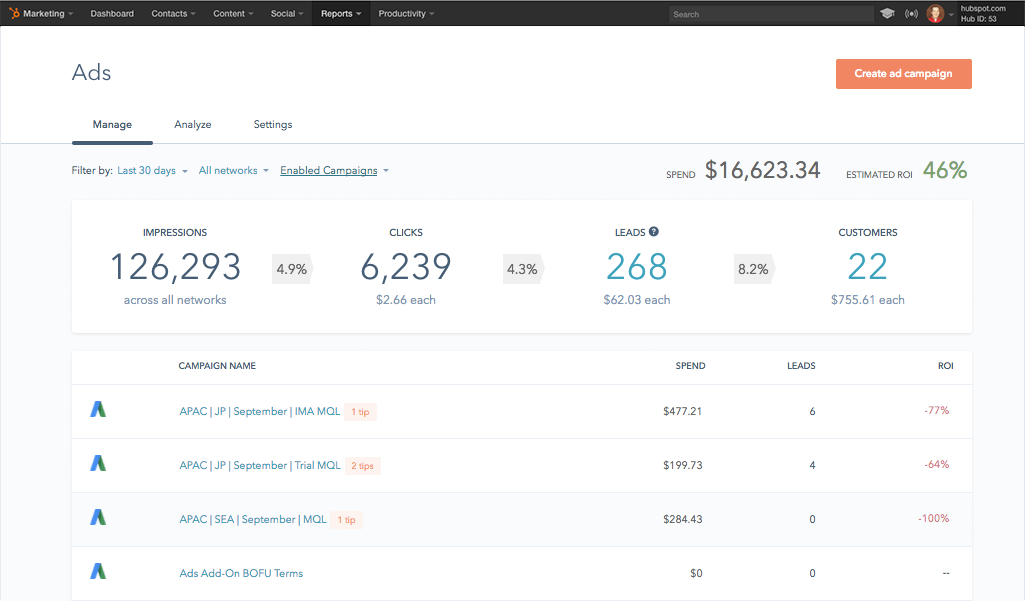
6. Use Smart Rules To A/B Test Your Email Subject Lines
Subject lines can have a significant impact on your email marketing.
In fact, according to the Convince and Convert blog, 35% of email recipients open emails based only on the subject line.
One of the ways to ensure you consistently get high open rates is to personalise your subject lines based on information relevant to the reader, as emails with a personalised subject line generate 50% higher open rates than those without.
In HubSpot, this can be done by creating smart rules. Smart rules allow you to customise the content in your subject lines based on a particular lifecycle stage or contact list membership.

The big upside is that it really works. According to studies, personalised emails can increase click-through rates by between 11% and 55%, and 80% of customers who received a personalised email from a vendor indicated that they would likely purchase from them again.
7. Increase Sales Team Productivity With Custom Playbooks
There are two really great reasons to use playbooks. The first is to help train your sales team, and the second is to create resources to help your sales team personalise their engagements with potential customers.
According to Salesforce, 80% of high-performing sales teams rate their sales training process as outstanding or very good. High-performing sales teams are 2.8x more likely to personalise their customer interactions than low-performing sales teams.
This is because top teams understand training is vital to empower sales reps with productivity-enhancing technologies and ultimately better engage with customers.
Playbooks form part of the HubSpot Sales tools and provide you with a means to create the sales collateral your teams need for training and customer interactions.
This creates a centralised database of call scripts, industry research, and training that can be used to upskill your team and personalise their communication with potential customers.
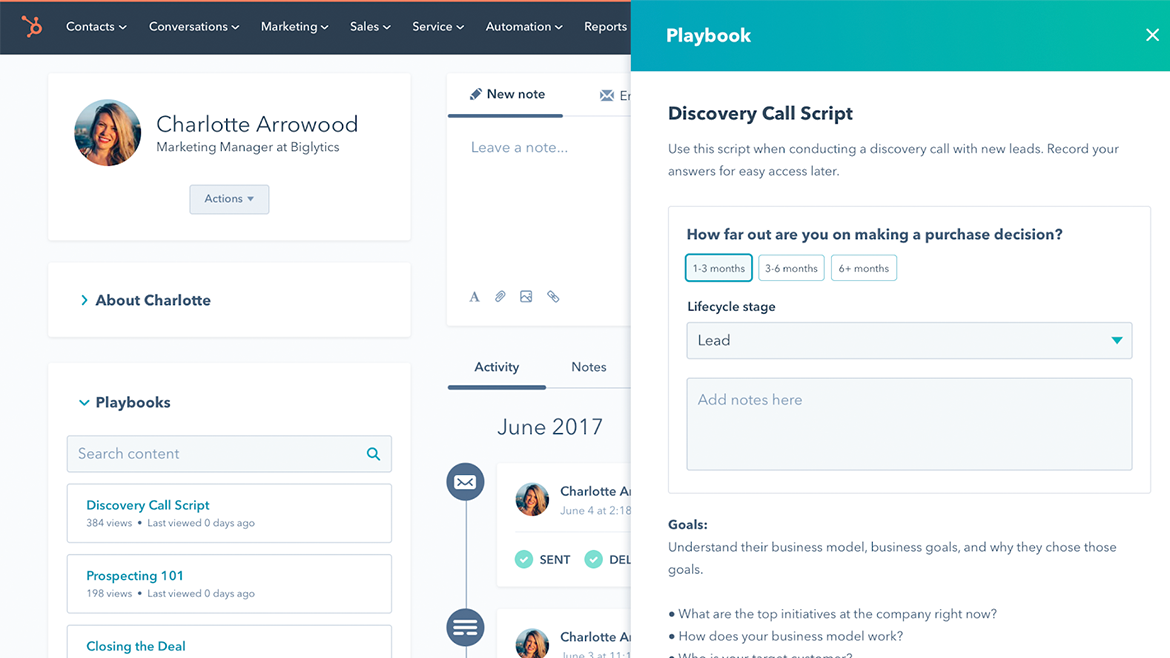
8. Automate Sales Task Creation Based On Lead Activity
Sales professionals spend just 34% of their time selling. The rest is spent on administrative tasks like creating CRM records, logging manual activities, and searching for relevant content to send to leads.
Image source: The Center for Sales Strategy
Automating tasks is critical to implementing an effective customer acquisition strategy. It saves valuable time and allows teams to spend time on what really matters, engaging with customers and closing deals.
In HubSpot, sales-specific automations allow teams to rotate leads, create tasks, and create deals.
These automations reduce the amount of time spent on administrative work and mean your sales team can spend more time selling.
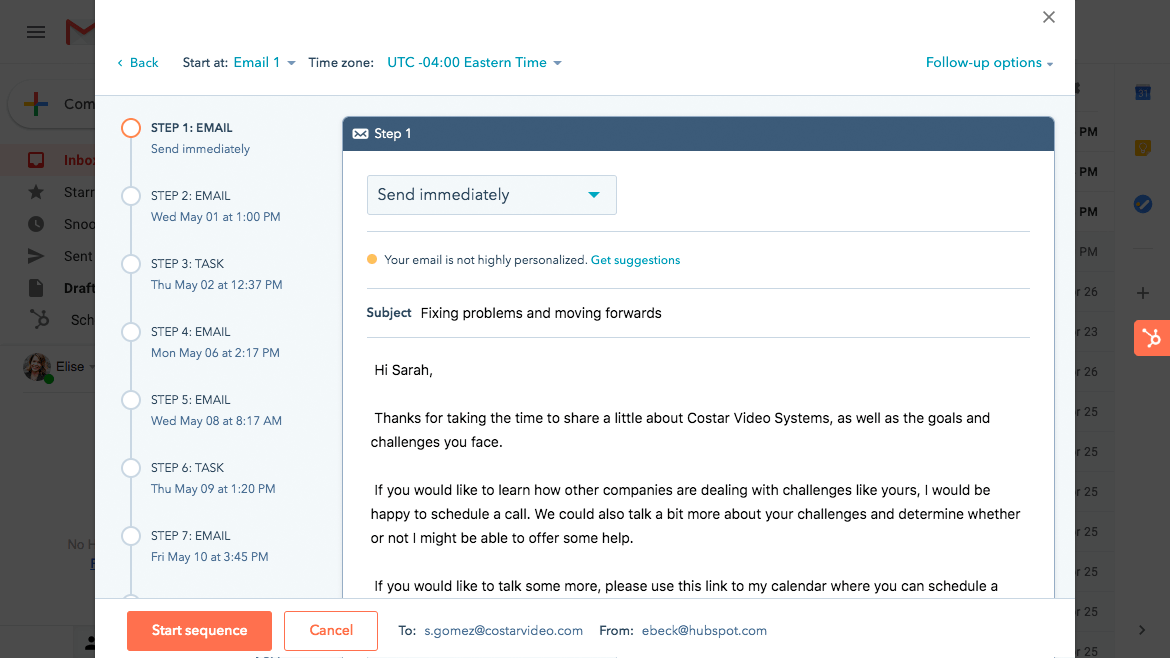
9. Use Snippets To Speed Up Sales Activity
Anything you can do to make your sales team more productive and efficient will result in more new customers.
One way to do this is to create templates for phrases used frequently by your sales team. This means that they don’t have to type them over and over again. Considering that the average typing speed is 40 words per minute, you could save your team a lot of time.
In HubSpot, this feature is called Snippets, these are short, reusable text blocks that can be used on contact, company and deal records, in email templates and in-chat conversations.
They have a character limit of 500 and are meant to be used for things like greetings, requesting contracts or communicating pricing information. Learn more bout it here:
HubSpot Snippet Tool | How to create snippets in HubSpot with this powerful feature
10. Use smart CTA’s to move leads through their buyer’s journey
We have already touched on personalisation, but just in case, here are a couple of extra stats from Instapage:
- 74% of customers feel frustrated when website content is not personalised.
- Personalised homepage promotions influenced 85% of consumers to buy, while personalised shopping cart recommendations influenced 92% of shoppers online.
- 79% of consumers say they are only likely to engage with an offer if it has been personalised to reflect previous interactions the consumer has had with the brand.
The main reason to use smart CTAs on your website is to improve your personalisation. A CTA or call-to-action is a statement designed to generate the desired action from the person viewing it.
With smart CTAs, the content changes depending on the visitor viewing it. So, instead of showing the same CTA to everyone that goes to your site, you can display different CTAs to different users based on whatever criteria you decide.
According to HubSpot, call-to-actions targeted to the user had a 42% higher viewed-to-submission rate than call-to-actions which were the same for all visitors. Smart CTAs are a no-brainer.
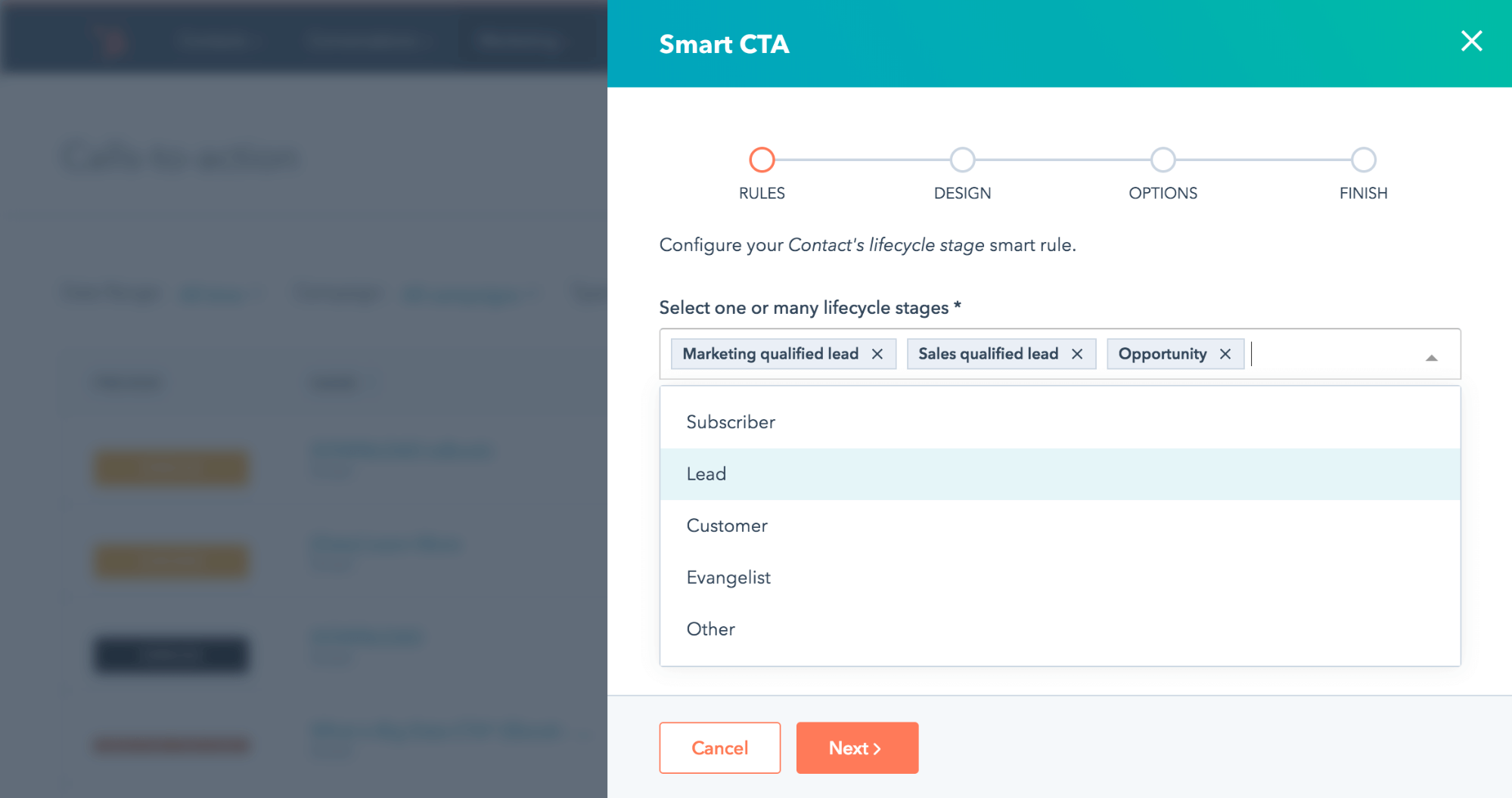
Key Takeaways
When it comes to successfully implementing customer acquisition strategies, having the right tools is essential.
HubSpot has built several tools (many of them free) to help you automate your marketing and sales processes, personalise experiences for your website visitors and close your reporting loop to improve decision making. Individually one of these tools may not make a very noticeable impact on your customer acquisition efforts but when used in conjunction with one another, you are sure to see positive returns.



